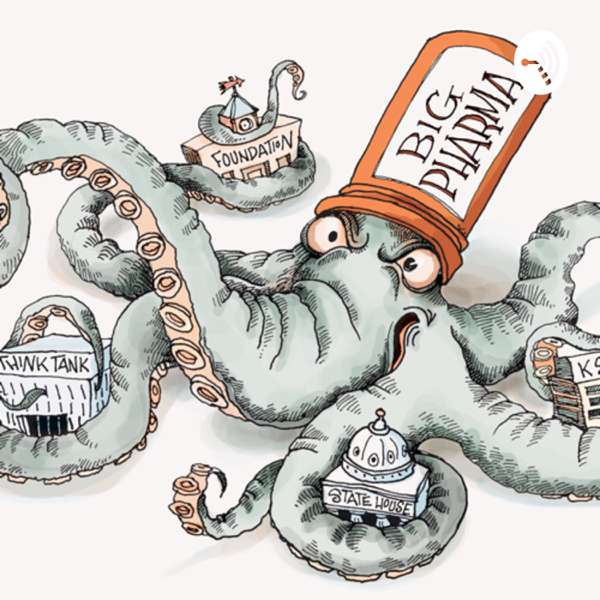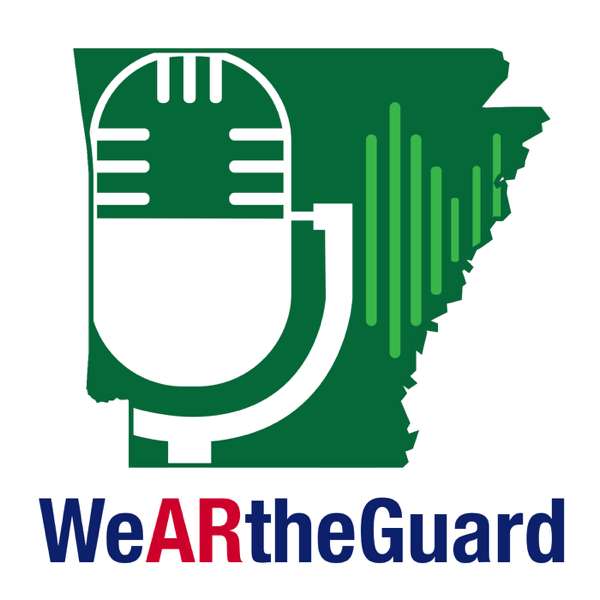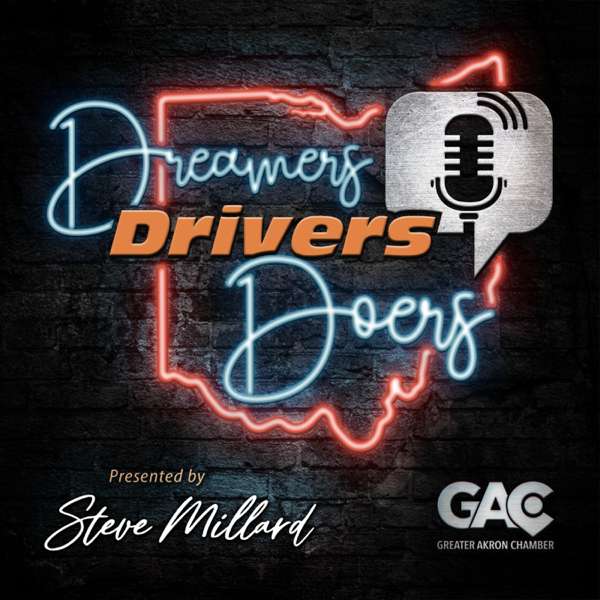This week we talk to Buck Bowden, Alaska master hunting guide and founder of Hidden Alaska Guides and Outfitters, one of the state's top-rated Dall Sheep, Moose, and Grizzly hunt outfitters. We talk about trying to make grizzly bear edible, how hunting culture has changed, the pressure high-end outfitters face to be successful from clients, young people in hunting, and his amazing story of becoming a true Alaskan bush man.
Alex rambles about Covid fatigue and Riley the Denali Park wolf who recently passed away.
Intro (1:11) Interview w Buck Bowden (10:19)
Links
Buck's Outfitting Business https://hiddenak.com/
Buck's Appearance on MeatEater Podcast https://www.themeateater.com/listen/meateater/ep-133-youre-a-cool-dude-buck
www.TheAKShow.com
Interview Notes
Buck hasn't run a trapline in 15 years - but he used to do it for a living. Since he started the hunting business he needed to be based more in town plus he got married. So in the 90s he didn't trap much - it was done in the 70s and 80s.
Buck got on Steve Rinella's podcast - that's where Alex heard him first - on MeatEater. Buck went to hang out with Steve and Steve asked him to hang out in the basement and have a couple beers and Yannis and the crew was there and they just put some headphones on him and they started talking.
When Buck jumped on the Meateater podcast he got inundated with emails and messages.
Buck is a master hunting guide and is the founder of Hidden Alaska Guides and Outfitters - a hunting lodge only accessible by floatplane in the Alaska Range. They specialize in dall sheep, moose, and grizzly hunts - but clients can also go after black bear or on eco-tours in the summer.
Buck reserves May, June, and July for friends, family, and clients who want to bring their family up. He doesn't put a ton of bank in the eco-tour stuff.
Buck just flew into his lodge recently. April is typically when they have spring bear hunters, but since the state banned out-of-state hunters he had a lot of cancelled trips. He's been harvesting logs from the beetle kill, taking care of the homestead, and harvesting burls for his bowls.
In the spring, bear hunts are 15% of his income. He usually only takes out two hunters per year in the spring since there's such a narrow window. Bears start coming out in April, but by the end of the month it's touch-and-go trying to get people out of there because snow conditions have really deteriorated. May is that time when you can't land on skis since the snow is too sloppy, but you can't land on the lake since there is still ice. Buck has to make a tough decision around this time of year every year how to get out there.
Landing in six feet of snow you'll bury down to the belly of the plane and you have to get on top of it to get out. It's pretty tricky since his "lake" is more of a glorified beaver pond and it's tough.
This time of year they go after brown bear more than black bear. They'll start seeing bigger boars first week of April. They'll go after them from the 5th to the 15th. The brown bear season is open year-round. Obviously you can't hunt them in the winter.
Buck has tried for 50 years to try to make brown bear edible and he just can't do it. Black bear is actually really tasty. Even the meat looks different. The black bear meat is a richer, deeper red. Brown bear is kind of a pale brown when you skin it. The taste is really funky.
Black bear usually come out the tail end of April. Pretty much every year in May he'll take a black bear for camp meat since they are pretty much living off the land.
What's the closest buck has come to making brown bear edible? He's tried it on the grill. The closest it was to being ok was boiling it on a simmer all day to tenderize it and then grilling it up and trying to season it but it always tastes rank.
They're known for sheep, moose, and brown bear in that order. Buck will be at the lodge doing his thing May, June, and July. When August 1st rolls around he'll "shut the fun off" and concentrate on getting sheep clients up. Sheep season opens August 10th. He tries to fly his guys out August 6th to get cmap set up and clients come in August 8th. From August 1st he's getting camps ready making sure the tents are in good shape. He has two sheep camps. He makes sure every camp has what they need. That first week of August is pretty busy preparing for the season.
August, September and the first week of October is when he makes 90% of his income.
Sheep is tough work. You have to go climbing for them. Buck says they very rarely surrender. How it works is they'll fly a client out on August 8th and they have a big steak dinner that night. August 9th - all his guides work one-on-one - the guys will hike their way into whatever spy camp they want. All of Buck's guys have been with him a while and they have the places they prefer. Guides will look for a group of rams. When they find one they'll camp August 9th that night and hopefully the next morning on the 10th they'll hike up and try to get within range. That's hopefully how it goes. A lot of times something happens and the weather is bad or something and they'll have to hunt the full 10 days, but more times than not the sheep hunter will get the sheep the first two-to-three days.
A lot of people may think the second hunt which starts August 19th that their odds are better on the first hunt than the second, but that's not true. THere's no fence around the place - the sheep are moving in and out. The odds of getting sheep on the second hunt are just as successful as the first hunt.
Buck started guiding in 1975 but went into business for himself in 1991. The first couple years were kind of slow - just like any business starting out. He had the sheep area he has now starting in '89. It's really grown and in the last 10-15 years after growing pains he really locked in his good guides and the system. So they've gotten into the ability to be a top-end sheep outfitter in Alaska, although the prices they have are pretty much the going rate of a quality dall sheep hunt with an established outfitter that's proven itself.
How has hunting changed? When Buck started doing it there were no sat phones, no inreaches, the plane took you and the client out, they dropped you off, and they said goodbye for 10 days and hopefully they remembered to come get you. There was no contact. The hunting ethics were that you were out there and you had to go look for the animals, find them, and kill them. It was a true hunt. But nowadays you have inreaches and sat phones and the cost of the hunt is so high that a lot of the hunters think that because they paid so much that they are guaranteed to get a sheep. It's actually illegal to guarantee an animal and it's unethical.
He's had close to 100% success over the last few years because the Dall Sheep populations have been high and his guides are very good and they have a lot of pride in making sure the hunt is successful. Buck's guides make his business. He owes everything he has to them.
Two types of clients: the blue-collar guy who has saved up his whole life for this and then the guys who have so much money that it buys them success in every endeavor. Two different types of pressure on the outfitter.
The guy who comes up to hunt and is on a fixed income and has saved up his whole life for this - these guys are the ones you almost cringe because you know it's a once-in-a-lifetime thing so if it's not successful it's really tough. But usually those guys are the ones who have a better attitude that understand hunting is hunting and they're going to work hard at it and they're not guaranteed a hunt. Better than guys who have so much money they feel like they've "bought" a sheep?
This can put pressure on outfitters to cheat - hunt outside of season or hunt on behalf of an exhausted client - but it's illegal and unethical. Every once in a while you'll hear of an outfitter who breaks the law on behalf of a client.
Do you have young people interested in this line of work? Buck thinks the average age of the hunters he gets is probably 50s and 60s. It doesn't seem the younger generation has as much interest or passion to hunt as it did back in the 70s and 80s. Same goes for guides. It's getting tough to find guides these days. When Buck was a kid it was a dream come true to get your assistant guide license and go out there and guide someone. That romance is gone. Since the 90s and into the 2000s it's really getting hard to find younger guides that want to grow up to be a guide. I don't know if it's because of the computer age or what's changed.
Buck gets approached often by younger adults or kids who want to guide as a job because they want to be out of the woods. If he finds someone like that he will put them to work until they get an assistant guide license. If an outfitter finds someone like that they need to take them in and help them along.
All guides have to be licensed. You have to get your assistant guide's license first by working for an outfitter and that outfitter gives you a recommendation. You have to be able to judge a legal animal, take an animal, take care of the meat. You have to be adept at photography and cooking. There are social skills too, you have to be able to get along with people. You would need a few years before you can feel comfortable enough to take and judge animals on your own. You need to have a mentor and work with them. They teach you the ropes and you feel comfortable doing it on your own.
Buck thinks there's a stronger trend for eco-tourism based on what's popular, but there's a strong hunting community. It's an American tradition and it will always be there and there will always be people with a passion to hunt. It's just not as popular with younger people.
How did Buck get into hunting? He came to Alaska in 1971. His parents sent him to Nome from Peoria, Il to live with his godparents because he was in trouble a lot. Buck always wanted to be a mountain man - he would draw cabins on hills in class as a young kid. When he was in Nome the native community would take him seal or ptarmigan hunting. He had such a passion for it he would learn it and retain it and by the time he got out of high school he was a pretty skilled hunter.
Part of the reason Buck wasn't a model-perfect child is because he was dying to go out in the woods and hunt, but his parents didn't believe in it and wouldn't take him. He would always run away from home and camp in the woods and he wanted to be in the outdoors all the time but he wasn't allowed to. When he was sent to Alaska he was placed in the element he wanted to be - and he went in the opposite direction. His parents didn't plan it.
The last straw was Buck got arrested and sent to juvenile courts. The judge was going to put him in a boys home and his parents spoke up and asked if they could send him to Alaska. The judge said, "I don't care where you send him just get him out of my town."
What did the Native culture in Nome teach Buck? A lot of it that he still retains to this day is the subsistence lifestyle. Right off the back he got a girlfriend and he would go with their family to fish camps during the summer and he saw the subsistence lifestyle. In the fall they would shoot geese and crane. Everything was done for a reason, not for sport. And that's what got him - the survival of it in a beautiful place in the outdoors. Everything you shot you ate. Buck appreciated that and it still impacts how he runs his outfit now.
Buck is a pure fair chase hunter meaning you don't use aircraft to locate game or try to lure them in. It means to be in the same element as it is that you're hunting. Buck is a real strong advocate of making sure there is no wanton waste. Take the whole animal, salvage all the meat, and use everything. You're not just shooting horns or antlers or a hide. You need to respect what it is that you're hunting. He passes those values along to clients and they know that's what his ethics are. 95% of the hunters he gets already have that attitude.
How did Buck get into the business after high school? After he graduated he was working at a battery manufacturing place. One of the guys there was an outfitter and he was looking for someone to go out and help him with the horses and live out in the woods and be a gopher. Buck immediately volunteered. It was a dream come true. This is when the pipeline was coming on. He had two choices: get rich working on the pipeline or go out in the woods and be a worthless mountain man. Guess what he chose?
Buck told him he knew about horses even though he knew nothing. They went up the Yentna river and just took the string of horses out until they got tired and stopped. They dropped everything and threw off the saddles and had the horses pull in logs to build the cabin. That initial journey was about six weeks. They thought it would be shorter but it wasn't really well-planned. The river was at a flood stage and there were times they were stalled and had to call for help. One time they couldn't cross the river with the horses up on the Yentna and they stamped an SOS in the sand and wait for a pilot to see them and get a boat.
That year Buck was new so he didn't take hunters out that fall. The next fall was his first time taking a hunter and the next winter was the first time he stayed out there alone and watched the horses and trapped. He wanted to be a mountain man and stay out there and trap. Sometimes Buck wouldn't have contact with anyone for three to three-and-a-half months.
He didn't feel isolated at all, he was living the dream and didn't want to wake up. He would go back to town three times a year to take a break and sell his furs at Fur Rendezvous. He would be in town for a week and he wanted to go home. Usually after the hunting season just before trapping season you go into town to get supplies for the winter. He would have a week in town then. Then come end of February/March he would come in for Fur Rendezvous and sell furs at the auction. After that he'd fly back out April or so and be out there until the ice would go out the first of June or so. He did that for about six to ten years or so in that routine.
The guy he was working for would get anyone he could find to pick him up and fly him back into town. Don Sheldon, one of Alaska's most famous bush pilots, went out to pick-up Buck for one of his last flights.
Buck's one connection to town was the radio stations in Anchorage. One was called "Bush Pipeline" and one was called "Ptarmigan Telegram." Every night at 7:30 and 9:30 people would call in and leave a message like, "To Buck, the plane is coming at such-and-such a time, so and so says hi". Every night he would make the popcorn and gather around the radio.
A lot of times Buck didn't really know what day of the week it was. He would take off for 3-4 days with the horses in snowshoes and come back and turn on the radio and figure out what day it was when he missed it.
What did Buck eat? Everything was canned butter or canned chicken. He lived a lot on sourdough hotcakes and bread. Twice a week he'd make sourdough bread. For Thanksgiving or Christmas or special dates he would make sourdough cinnamon rolls. There were times when you'd eaten all the good stuff. Buck wasn't very good at conserving. Sometimes he was down to nothing but a meat diet. No butter, potatoes, sugar, nothing. It didn't bother him. It was part of the game.
Buck would run out of meat sometimes. He'd shoot a black bear but during the summer all of his meat would come from fishing for grayling or hunting rabbits. He lived on porcupine a lot. Anything he could catch. If you shot a bear there was no way to preserve it because the weather was warm. Once he did shoot a black bear and he made a smoker and that meat kept for quite a while.
In the winter Buck would just quarter it and leave it outside.Back in those days the average temperature was 25-30 degrees below zero. They would just have the quarters hanging on the porch, because smaller animals would try to get the meat. You just go out there with the meat saw and saw some off and put it in a pot on the stove which was going all day. Then he would go out on the trapline on snowshoes. By the time he got back the meat had simmered all day long and it was ready to eat. Towards the end of the season all he might have is salt to season it with.
Buck heard of bears being out in the middle of winter but he never ran into one that woke up early.
His favorite season out there? He got to not loving the fall because he had to be with hunters and other people. But his favorite was probably late spring because it was just Buck out there and the snow was going away and the days were getting warmer and it would finally get down to the ground and you'd get the smell of new life coming out of the ground and leaves coming on the trees and everything rolling into summer. The bugs weren't out yet.

 Our TOPPODCAST Picks
Our TOPPODCAST Picks  Stay Connected
Stay Connected







